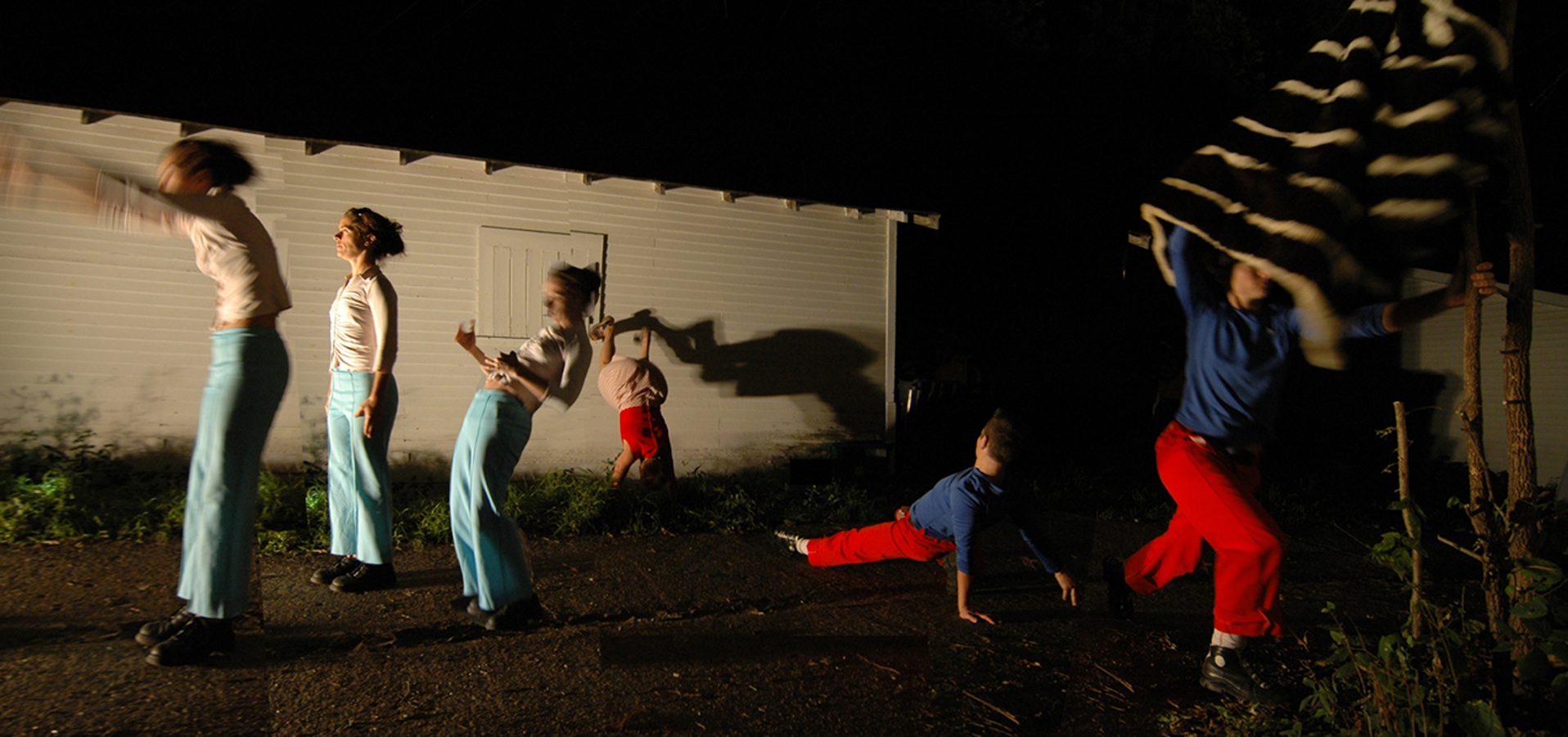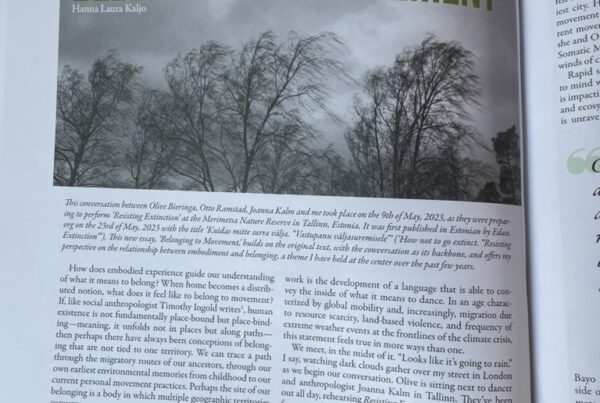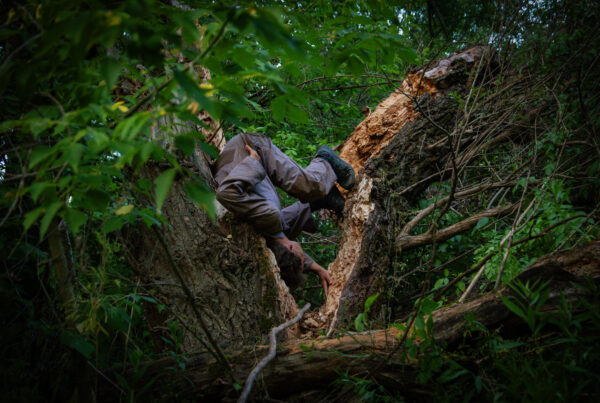Author: Peter Witrak
Date: January, 22, 2009
Source: danceonpaper.com
Holiday House is a playful performance that rarely lets go of your attention, like a wayward toddler whose silly antics turn the living room carpet into a stage. Yet the performers in the Body Cartography Project display much more than eccentric behavior; they are quirky and convincing movers, and fortunately are given a lot of structure under the solid direction of Olive Bieringa and Otto Ramstad.
There is something gratifying as a spectator when an artist accomplishes what she or he sets out to do. In his bio, Ramstad admits “an insatiable interest in the process of creating kinesthetic visual images with movement.” The composition of Holiday House is proof of this interest, with its fine-tuned arrangement of image and movement, dance and film. Choreography and direction are two separate realms, and Bieringa and Ramstad navigate both with conviction.
The work, a composite of three performances adapted specifically for P.S. 122’s space, is held up by consistently clever choices. Rarely is an idea drawn out too long or wasted. Kinetic investigations with objects are innovative and complete (slithering around on a couch, exploring the sound a butter knife makes, getting on a bicycle). The inhabitants of Holiday House do these things as if their family reunion utterly bored them, yet the result is far from boring; it’s as if they were re-instilled with the curiosity of a child, whose awareness of social codes is not yet developed. Such, they are both innocent (observing others, investigating a utensil) and tempestuous (throwing cookies off the table, aggressive duets suggesting sibling quarrels).
Film projections and the use of live-feed cameras are decisive and purposeful (coordinating previously recorded site-specific work with real-time performance), creating a duplicitous framework where performers play with their alter-ego on screen. We see a film shot in the directors’ real home in Minneapolis, in which everybody resumes their antics: silliness in the kitchen, rolling around in the backyard, and stillness in the nighttime alley. The performers watch the films like home videos, sitting on the couch or holding a remote TV.
The movement vocabulary struck me as truly contemporary, as I saw virtually no reference to other dance techniques. Ramstad flings himself around the stage in a short solo, initiating his leaps from the hips yet not changing his straddle. The movement is fidgety and spastic without being frantic or unorganized. Both Bieringa and Ramstad are Body Mind Centering® practitioners, and this is evident in the suppleness of their dancing.
What impressed me most was the group’s strong sense of ensemble. One of the most riveting moments was perhaps the simplest: At one point, all six performers quietly sat at a dinner table and just looked at each other, sharply pivoting their heads every few moments, birdlike. Not much is happening at this moment, but their quiet, quirky connectedness spoke volumes. (Recalling work of Morgan Thorson, who helped develop the piece and who performed in an earlier version. They also credit Kristin Van Loon and Karen Sherman) The members of the Body Cartography Project each possess a deadpan presence that is ironically expressive and refreshingly unforced. They are hip, alternative and queer (even if they may be straight) and in all their artistic performativity come off as entirely unpretentious.
It was definitely a family affair -quite literally- with a dance-party scene to Mary J. Blige’s groove, “Family Affair”. As I left the theater, some objects were still laying in a line across the stage from the final scene. The most poetic was a mixing bowl that contained an old eggbeater and a vintage copy of Andy Warhol’s Philosophy of Andy Warhol (whose paperback cover is in the style of the Campbell’s soup label). A remnant of a cooking experiment gone artfully astray.



